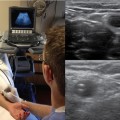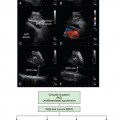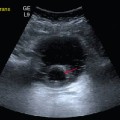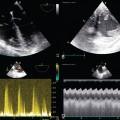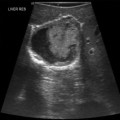30 Cardiac injury as a result of blunt or penetrating chest trauma is common and associated with significant morbidity and mortality. Approximately 25% of traumatic deaths are caused by cardiac-related injuries, with the majority involving either cardiac or great-vessel damage.1 Most penetrating cardiac wounds are immediately fatal. For those arriving at the hospital alive, focused assessment with sonography for trauma (FAST) and transthoracic echocardiography (TTE) are the primary screening modalities. These injuries remain a challenge to trauma surgeons and are associated with high mortality. The incidence of blunt cardiac injury is unknown because of the lack of an accepted “gold standard” test for diagnosis. Blunt cardiac trauma can cause a wide spectrum of injuries (e.g., conduction abnormalities, valvular injuries, septum or free wall rupture, and coronary artery thrombosis).2 Patients with cardiac injury may have profound hypotension necessitating urgent surgery; however, a significant number of patients arrive at the emergency department without overt symptoms of heart injury.3 Regardless of the cause or the clinical picture, diagnosis should be made rapidly. If these patients are exposed to delays in diagnosis or treatment, deaths may occur that would otherwise have been classified as preventable. The initial evaluation of patients who sustain cardiac trauma includes physical examination and chest radiography. The sensitivity and specificity of both modalities for diagnosing cardiac injury are low, however.4–6 Other diagnostic tools include subxiphoid exploration (SXE), two-dimensional TTE, transesophageal echocardiography (TEE), and FAST. SXE is a time-tested technique that has proved to be accurate in diagnosing cardiac injuries. Disadvantages of its use relate to its lack of specificity for significant injury. Moreover, it is an operative procedure that subjects patients to the risks associated with surgery and general anesthesia. The rate of negative explorations approaches 75% to 80% in most series.7 FAST has become an integral part of primary cardiac injury evaluation because it is valuable in the diagnosis of pericardial effusion (sensitivity, 92% to 100%; specificity, 99% to 100%).6,8 However, absence of pericardial fluid rules out tamponade, but it does not rule out cardiac injury. FAST cannot assess cardiac function or detect valvular injuries. TEE identifies the presence of ventricular dysfunction in suspected cases of myocardial contusion9 and is sensitive in detecting thoracic aortic injury and evaluating valvular structure and function.10 However, TEE is a semiinvasive method that may require sedation, and it might sometimes prove difficult to perform the examination (e.g., cervical spine, facial, airway, or esophageal injuries). TEE is an operator-dependent imaging modality. It is difficult to find experienced operators to perform the examination in emergency environments; however, this does not apply to the intensive care unit (ICU). TTE was introduced in the field of trauma surgery more than 30 years ago. This noninvasive diagnostic modality is readily available and portable and lacks ionizing radiation. TTE gained widespread acceptance in detecting cardiac injuries mainly because of its high sensitivity in identifying pericardial effusion. Jimenez et al11 prospectively compared TTE with SXE. They performed TTE in 73 stable patients with penetrating chest wounds. The reliability of TEE was comparable to that of SXE, with a sensitivity of 90%, specificity of 97%, and accuracy of 96%. Freshman et al5 performed TTE in 36 hemodynamically stable patients with penetrating chest injuries. Of the four patients with abnormal findings, three had small pericardial effusions. All three patients recovered without sequelae after a period of observation. The fourth patient had a large pericardial effusion, and sternotomy revealed significant left ventricular injury. The authors concluded that TTE is an adequate alternative to other conventional diagnostic tests. Beggs et al12 evaluated 40 patients with blunt chest trauma. Nine patients had abnormal echocardiograms, with findings of pericardial effusion in four, chamber enlargement in three, and echodense right ventricular areas in two. The authors concluded that TTE can be used as a noninvasive modality to complement other clinical tools in the detection of blunt cardiac injury. Echocardiography is the method of choice for diagnosing pericardial effusion and cardiac tamponade. Echocardiographic findings in patients with cardiac tamponade include cardiac chamber compression, inferior vena cava (IVC) plethora, Doppler flow velocity paradoxus, compression of the pulmonary trunk, compression of the thoracic IVC, paradoxic motion of the interventricular septum, and swinging motion of the heart in the pericardial sac.13 The thinner, more compliant right-sided chambers are usually the first to be compressed in the setting of cardiac tamponade. Right ventricular and atrial collapse is a commonly used clue for tamponade; however, neither is 100% sensitive or specific for tamponade.7
Echocardiography in cardiac trauma
Overview
Diagnostic methods
Subxiphoid exploration
Focused assessment with sonography for trauma
Transesophageal echocardiography
Transthoracic echocardiography
Disorders
Cardiac tamponade
![]()
Stay updated, free articles. Join our Telegram channel

Full access? Get Clinical Tree


Radiology Key
Fastest Radiology Insight Engine

